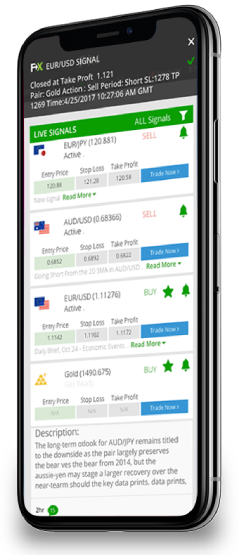As a result of relatively low bid-ask spreads and excellent liquidity, USD/JPY is a favorite of currency traders worldwide. Occasionally referred to as the Gopher or Ninja, valuations of the USD/JPY depend heavily on foreign
trade. The USD/JPY pair is an abbreviated term depicting the US dollar and Japanese Yen (denoted by its symbol ¥).
Since the Japanese Yen is the second currency (quote currency), the pair is called an indirect currency. The currency pair indicates how many Japanese Yen (the quote currency) are needed to purchase one US Dollar (the base
currency). For example, if the pair is trading at 110, it means it takes 110 Japanese Yen to buy 1 US Dollar.
Breaking Down USD/JPY
USD/JPY is one of the world's dominant currency pairs, with a 2019 Bank for International Settlements survey revealing that USD/JPY represented 13.2% of total daily volume in the forex markets. The most notable factor
influencing the pair is the difference in interest rates set by the US Federal Reserve and the Bank of Japan (BoJ).
USD/JPY has traditionally been linked with the carry trade. This investment mechanism includes speculators borrowing money at low-interest rates and purchasing higher-yielding assets in a different currency. Before the financial
crisis of 2008, investors would take advantage of regularly ultra-low interest rates from the Bank of Japan to borrow large amounts of Yen and invest the money abroad.
As US interest rates fell due to the 2008 crash, the interest rate differential among the central banks of the US and Japan tightened significantly, leading to a reduction in carry trades as the value of the Yen rose. However,
as US interest rates begin to climb again in 2022 while the BoJ stays committed to its ultra-low interest rate plan, the dollar has appreciated significantly against the Yen, and carry trades are likely to pick up again.
What Determines the USD/JPY Exchange Rate?
Several factors can impact the USD/JPY valuation, including:
BoJ & US FED Monetary Policies
The Bank of Japan and Federal Reserve control the supply of money in the market to keep the economy on track. A dovish policy, also known as expansionary policy, weakens the currency as the monetary supply increases. In
contrast, a hawkish monetary policy (contractionary policy) strengthens the currency as central banks increase interest rates, contracting the monetary supply.
Economic Events:
Movements in the US and Japanese economic events determine the exchange rates. Top-of-the-line economic events include:
- Gross Domestic Product (GDP)
- Employment data, like Unemployment Rates and Non-Farm Payrolls (U.S. only).
- Industrial Output data.
- Consumer Price Index (CPI) and Producer Price Index (PPI).
- Export and International Trade data (significant in Japan).
- Tankan Surveys (Japan only).
Better than forecast data increases the demand for the related currency and impacts the value of either the Yen or U.S. Dollar, causing fluctuations in the USD/JPY exchange rate as investors rush in to buy either currency.
Let’s take a closer look at some of these events.
Gross Domestic Product
The Gross Domestic Product (GDP) is a central measure of economic growth in the region and is the forerunner of U.S. and Japanese economic prosperity.
Employment Change
The Japanese Yen is particularly sensitive to changes in employment, as high unemployment marks signs of weakness in the Japanese economy and is of particular concern to the BoJ.
Consumer Price Index
Since one of the main goals of the BoJ is to maintain price stability, they keep an eye on inflation indicators such as the CPI. If the annual CPI deviates from the central bank target of 2%, the BoJ could use its monetary
policy tools to keep inflation in check.
Export and International Trade Data
The Japanese economy is massively export-dependent. Data that shows imports outweigh exports have a particularly negative effect on the price of the Yen.
Tankan Surveys
A peculiarity of the Japanese economy is the importance of the quarterly Tankan Survey. These reports survey managers from a broad range of industries, questioning them on their views of the economy. Rising sentiment (scores
above 0.0) indicate that Japanese businesses expect commercial activity to pick up, while scores below 0.0 suggest the opposite.
Other USD/JPY Price Factors:
These aren’t the only factors, however. There are others, such as:
Safe Haven status
Despite the weakening economic events of the Japanese economy in the 21st century, the Japanese Yen remains a safe haven currency and is known as Asia’s reserve currency. The Japanese Yen appreciates when investors experience
fear, stress, or uncertainty about the market. This was evident during the 2008 financial crisis, where USD/JPY traded from above ¥120 in 2007 to below ¥90 in 2009.
Bank of Japan intervention
The BoJ has intervened many times in order to maintain economic growth. As mentioned, Japan is largely reliant on exports, meaning it favors a weak currency as its exports become cheaper. As the Yen soared in 1999, for example,
the BoJ sold off massive amounts of Yen to increase the supply and drop the price. As the Yen grew after the attacks of September 2001, Japan sold heavily to keep growing the economy.
Natural disasters
Japan is unlike the U.S. in that it frequently experiences frequent natural disasters due to its climate and topography, with typhoons, volcanic eruptions, earthquakes, and tsunamis plaguing its citizens. Large events cause
significant destruction and disruption to the Japanese economy, weakening the currency.
Strength of Nikkei
A decline in the Yen usually lifts the price of export-oriented companies as exports become cheaper. This boosts the Nikkei 225, the leading stock market index in Japan. Similar to the relationship between the dollar and U.S.
equities, there’s somewhat of an inverse correlation between the two, though it tends to be stronger in Japan.
USD/JPY Recent Events
Coronavirus
As Covid took hold of the U.S. and Japanese economies, millions stayed home, and economic activity plummeted. This has caused drops in GDP for both countries, with lower economic investment and a fall in exports hurting an
already somewhat precarious Japanese economy. Exports have since grown, but domestic demand remains contracted.
Divergence in monetary policy
As Japan stays committed to driving consumer spending and hasn’t yet seen U.S. levels of inflation (Japan’s CPI is only 2.2% in August 2022, compared to the U.S.’s 8.5%), the BoJ has refused to raise interest rates at all since
the pandemic, leaving them unchanged at -0.1% from 2016.
In stark contrast, the U.S. has begun steadily increasing interest rates, reaching 2.5% in August 2022, with further rises expected. This divergence has caused the USD/JPY price to soar from around ¥115 to just under ¥140 from
the start of 2022, when rate hikes began.
High US inflation
Inflation is the primary reason for the recent rate hikes in the US, as the Fed is keen to get spending under control and reduce figures back down to their target of 2%. If inflation worsens, the U.S. dollar will appreciate as
interest rates rise, partly due to carry trades, while a dovish BoJ sticks to its commitment of ultra-low interest rates, weakening the Yen.
Pelosi visit to Taiwan
As a demonstration of the Yen’s status as a safe haven asset, news of Nancy Pelosi’s controversial visit to Taiwan saw the Yen appreciate as investors became uneasy over the geopolitical situation with China. Hitting the news on
the 19th of July 2022, USD/JPY fell from ¥138 to ¥130 in the days leading up to her trip, bottoming out on the date of the visit (2nd of August) as fears declined.
USD/JPY Specifications
USD/JPY is traded in amounts denominated in Japanese Yen. Standard lot Size: 100,000 USD Mini lot size: 10,000 USD One pip in decimals 0.01 Pip Value: $10 (varies with exchange rate)
Formula
Profit/Loss = (Bid Price – Ask Price) X Contract Size X Number of Lots / Closing Price









